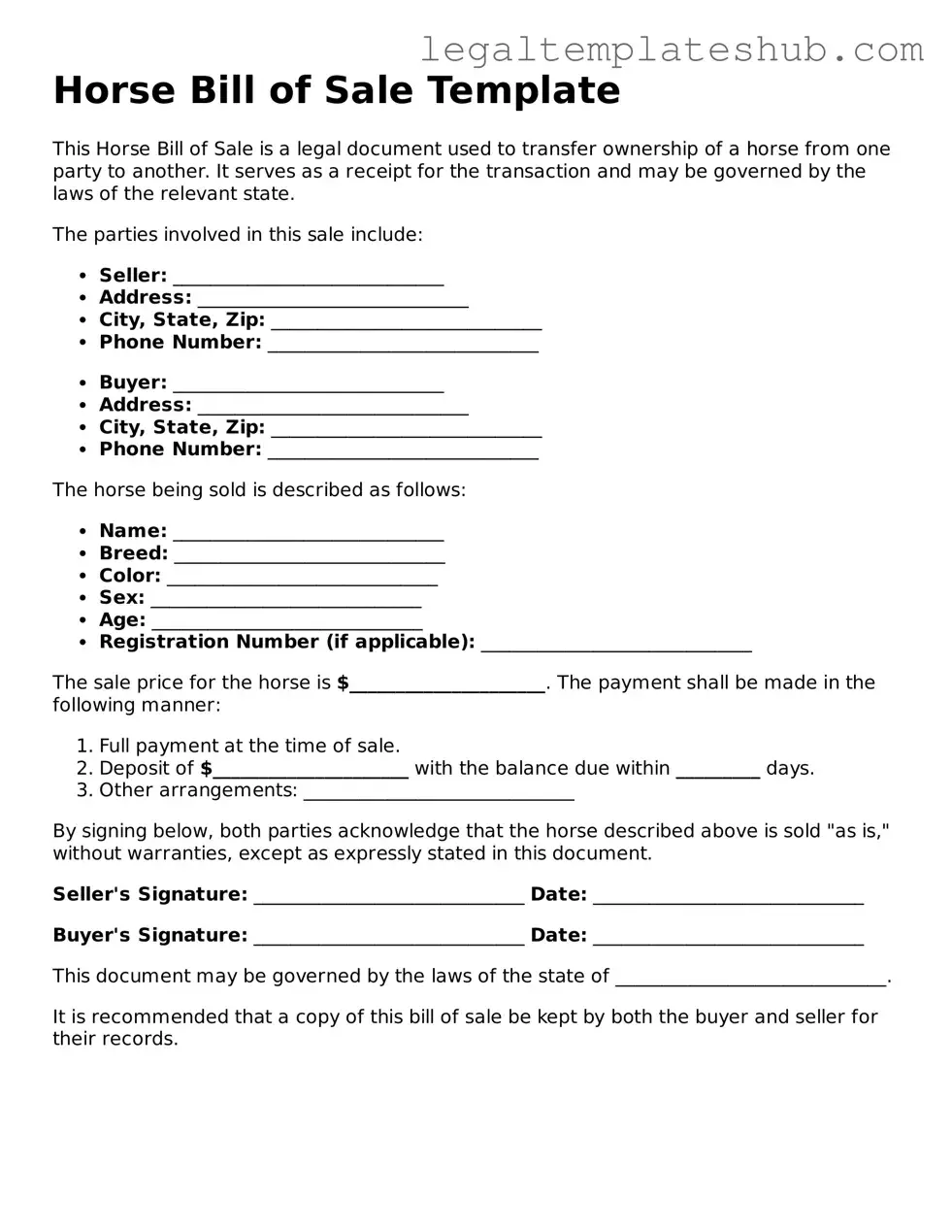Printable Horse Bill of Sale Template
The Horse Bill of Sale form is a legal document that records the sale of a horse, ensuring that both the buyer and seller have a clear understanding of the transaction. This form outlines essential details such as the horse's description, sale price, and the terms of the sale. If you're ready to make a purchase or sell your horse, fill out the form by clicking the button below.
Access Editor
